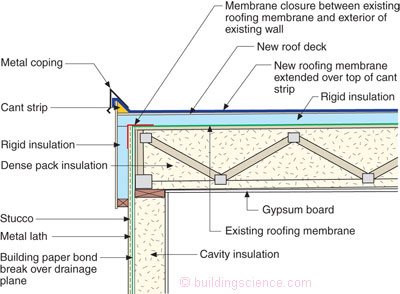It does an excellent job of limiting air movement and because it is hygroscopic definition.
Does blown in cellulose insulation need a vapor barrier.
If you are not sure if you need insulation in your walls follow along with this flow chart.
A bag of cellulose runs about 11 50 and will cover 36 7 square feet at a.
Thousands of houses.
Does his house need a vapor barrier with blown in insulation.
Without a vapor barrier show faster drying and lower overall moisture levels over identical assemblies with vapor barriers installed.
Likely do not need an air vapor barrier where cellulose insulation is used.
In summary we do not recommend the use of vapor barriers with cellulose insulation except in circumstances of exceptionally high moisture levels such as an indoor pool facility and we warrant our cellulose insulation for the life of the building when installed by an approved greenfiber insulation contractor.
Of course it s important to always check as some local building codes may still require an air barrier or vapor barrier be installed.
Hygroscopic means a substance tends to absorb moisture from air it manages moisture as well.
Not every wall does.
If you decide to go ahead with the plan to install cellulose on the attic floor you don t need a vapor barrier.
Are getting energy audits with recommendations to blow in cellulose into the empty exterior wall cavities.
That s because cellulose is the only insulation that actually manages moisture.
This article explains the necessary work.
Your first job after the studs are in place is to fill those walls with insulation.
Cellulose insulation has an average thermal value of r 3 7 so you d need just over five inches to equal an r 19 batt.
Air movement and diffusion.
I have read that without a vapor barrier.
But you do need to perform air sealing work before beginning the insulation job.
Cima does not recommend the use of vapor barriers with cellulose insulation except in circumstances of exceptionally high moisture levels such as an indoor pool facility or very cold climates.
A lot of us with older 100 years homes are getting energy audits with recommendations to blow in cellulose into the empty exterior wall cavities.
Vapor barrier is always installed on a warm side of the house in a winter with a fiberglass insulation but cellulose manufacturer doesn not recomend installing vapor barrier with this type of insulation.
According to fallow we are not sure we agree cellulose insulation requires no vapor barrier in the overwhelming majority of installations.
Air sealing an attic.

